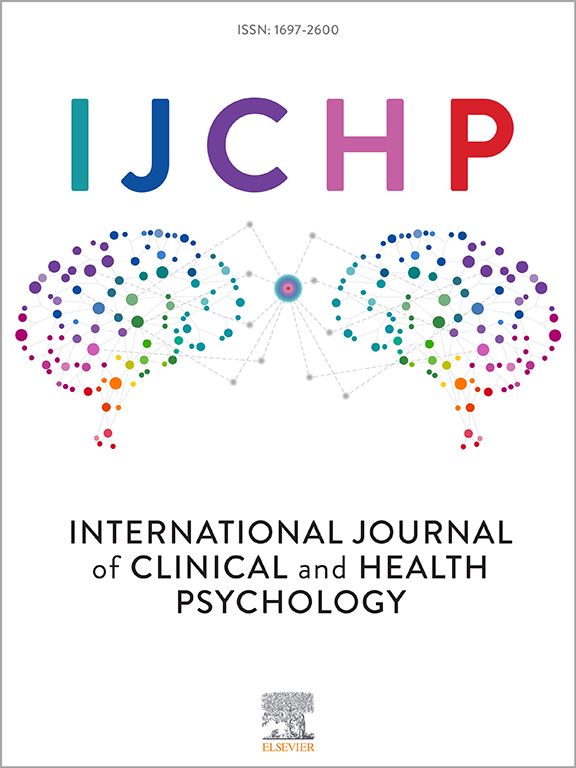Optimizing pediatric “Mild” traumatic brain injury assessments: A multi-domain random forest analysis of diagnosis and outcomes
IF 5.3
1区 心理学
Q1 PSYCHOLOGY, CLINICAL
International Journal of Clinical and Health Psychology
Pub Date : 2025-06-27
DOI:10.1016/j.ijchp.2025.100600
引用次数: 0
Abstract
Objective
Despite advances in imaging and fluid-based biomarkers, the care for pediatric “mild” traumatic brain injury (pmTBI) remains primarily dependent on clinical evaluation. However, the optimal clinical assessments for diagnosing pmTBI and predicting outcomes remain debated, including which individual test or combinations of assessments are most effective, and how this evolves as a function of time post-injury.
Method
Random Forest models were used to identify the most effective assessments for diagnostic (pmTBI vs. healthy controls) and outcome (pmTBI with favorable vs. poor outcomes, based on persisting symptoms) classification accuracy across a comprehensive battery including domains of self-reported clinical-ratings, paper-and-pencil cognitive tests, computerized cognitive tests, symptom provocation during neurosensory tests, and performance-based neurosensory measures. Assessments were conducted within 11-days, at 4-months and 1-year post-injury to examine acute and long-term recovery trajectories. A total of 323 pmTBI (180 males; age 14.5 ± 2.8 years) and 244 HC (134 males, 14.0 ± 2.9 years) were included (∼75 % 1-year retention) in final analyses.
Results
Self-reported clinical-ratings outperformed performance-based metrics across all visits in both models, with somatic complaints demonstrating the highest predictive validity. Cognitive tests of memory aided diagnostic classification, while emotional disturbances were predictive of outcome classification up-to 4-months. Retrospective ratings, reflecting trait-like characteristics, were more predictive for identifying individuals at risk of poor outcomes. Computerized cognitive and neurosensory tests had limited predictive value beyond 1-week post-injury.
Conclusions
Clinicians should adopt a tailored approach for clinical assessments across different post-injury intervals to enhance clinical care, shorten assessment batteries, and better understand recovery in children with “mild” TBI.
优化儿科“轻度”创伤性脑损伤评估:诊断和结果的多域随机森林分析
目的:尽管影像学和基于液体的生物标志物取得了进展,但儿童“轻度”创伤性脑损伤(pmTBI)的治疗仍然主要依赖于临床评估。然而,诊断pmTBI和预测预后的最佳临床评估仍存在争议,包括哪种单独测试或评估组合最有效,以及这种评估如何随着损伤后时间的推移而演变。方法随机森林模型用于确定诊断(pmTBI vs.健康对照)和结果(基于持续症状的pmTBI有利vs.不良结果)分类准确性的最有效评估,包括自我报告的临床评分、纸笔认知测试、计算机认知测试、神经感觉测试期间的症状激发和基于表现的神经感觉测量。在损伤后11天、4个月和1年内进行评估,以检查急性和长期恢复轨迹。pmTBI共323例(男性180例;年龄14.5±2.8岁)和244例HC(男性134例,14.0±2.9岁)纳入最终分析(1年保留率约75%)。结果在两种模型中,自我报告的临床评分在所有访问中都优于基于绩效的指标,其中躯体投诉显示出最高的预测效度。认知测试的记忆辅助诊断分类,而情绪障碍是预测结果分类长达4个月。反映性格特征的回顾性评分在识别有不良结果风险的个体方面更具预测性。计算机化的认知和神经感觉测试在损伤后1周后的预测价值有限。结论临床医生应针对不同伤后时间间隔的临床评估采取量身定制的方法,以加强临床护理,缩短评估周期,并更好地了解“轻度”TBI儿童的康复情况。
本文章由计算机程序翻译,如有差异,请以英文原文为准。
求助全文
约1分钟内获得全文
求助全文
来源期刊

International Journal of Clinical and Health Psychology
PSYCHOLOGY, CLINICAL-
CiteScore
10.70
自引率
5.70%
发文量
38
审稿时长
33 days
期刊介绍:
The International Journal of Clinical and Health Psychology is dedicated to publishing manuscripts with a strong emphasis on both basic and applied research, encompassing experimental, clinical, and theoretical contributions that advance the fields of Clinical and Health Psychology. With a focus on four core domains—clinical psychology and psychotherapy, psychopathology, health psychology, and clinical neurosciences—the IJCHP seeks to provide a comprehensive platform for scholarly discourse and innovation. The journal accepts Original Articles (empirical studies) and Review Articles. Manuscripts submitted to IJCHP should be original and not previously published or under consideration elsewhere. All signing authors must unanimously agree on the submitted version of the manuscript. By submitting their work, authors agree to transfer their copyrights to the Journal for the duration of the editorial process.
 求助内容:
求助内容: 应助结果提醒方式:
应助结果提醒方式:


